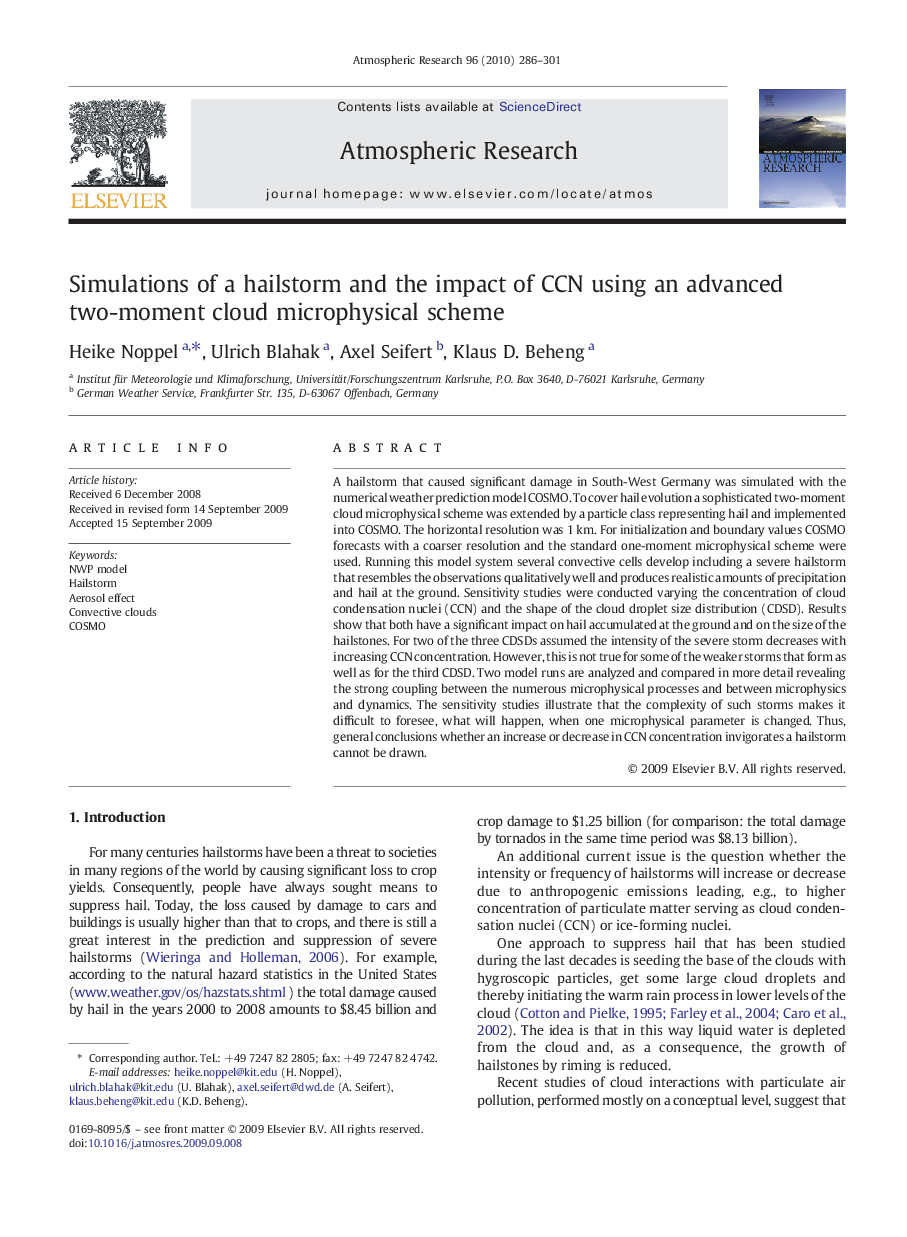| Article ID | Journal | Published Year | Pages | File Type |
|---|---|---|---|---|
| 4450677 | Atmospheric Research | 2010 | 16 Pages |
A hailstorm that caused significant damage in South-West Germany was simulated with the numerical weather prediction model COSMO. To cover hail evolution a sophisticated two-moment cloud microphysical scheme was extended by a particle class representing hail and implemented into COSMO. The horizontal resolution was 1 km. For initialization and boundary values COSMO forecasts with a coarser resolution and the standard one-moment microphysical scheme were used. Running this model system several convective cells develop including a severe hailstorm that resembles the observations qualitatively well and produces realistic amounts of precipitation and hail at the ground. Sensitivity studies were conducted varying the concentration of cloud condensation nuclei (CCN) and the shape of the cloud droplet size distribution (CDSD). Results show that both have a significant impact on hail accumulated at the ground and on the size of the hailstones. For two of the three CDSDs assumed the intensity of the severe storm decreases with increasing CCN concentration. However, this is not true for some of the weaker storms that form as well as for the third CDSD. Two model runs are analyzed and compared in more detail revealing the strong coupling between the numerous microphysical processes and between microphysics and dynamics. The sensitivity studies illustrate that the complexity of such storms makes it difficult to foresee, what will happen, when one microphysical parameter is changed. Thus, general conclusions whether an increase or decrease in CCN concentration invigorates a hailstorm cannot be drawn.
